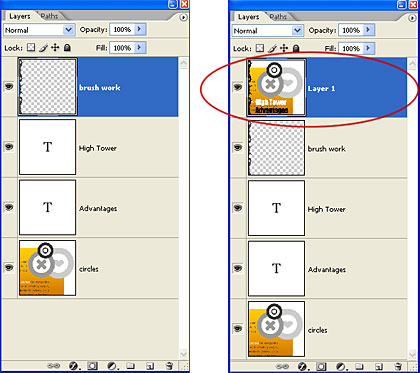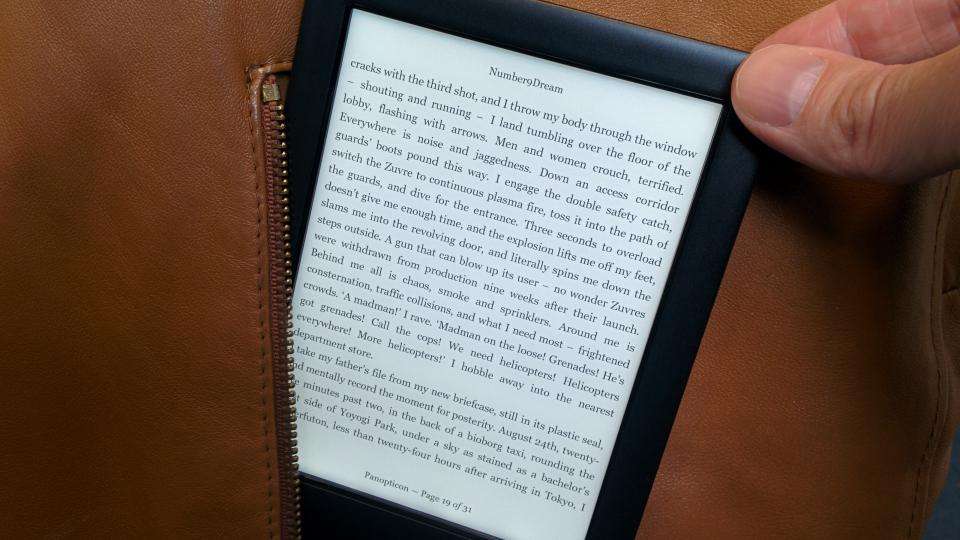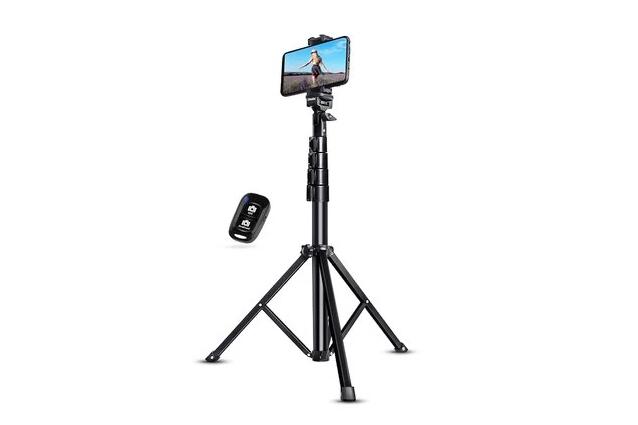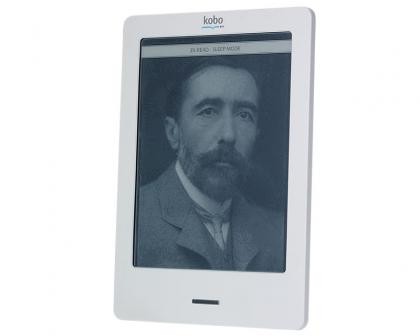What Is Adobe Photoshop and What Can It Do? Quickstart for Beginners
Have you ever heard someone say “That is definitely photoshopped”? If you work in the creative industry as a designer, photographer, art director or any of the other industry roles, you know this is pretty normal to hear. However if you don’t currently work in the industry but are interested in pursuing a career in visual arts then you should probably know about Photoshop.

Photoshop is a photo editing and graphics creation software that was developed by the company, Adobe. Photoshop offers a wide variety of image editing features as well as the capability to create complex graphics. Photoshop has become the industry standard for many creatives as it is very versatile and is usually one of the first programs many learn to use.
In the rest of this article I’ll go into more detail about Adobe Photoshop, why you should consider using it and how you can get your hands on it.
What Is Photoshop?
Adobe Photoshop is a software used for editing photographs, compositing digital art, animating, and graphic design. Adobe photoshop comes with professional tools that makes it easier for artists to bring their ideas to life. One of the major advantages of using Adobe Photoshop is its ability to create multiple layers that can be altered independently of each other. New tools and features are always being added as Adobe gathers feedback from artists on ways to improve Photoshop.
Who Created Photoshop?
Photoshop was originally created by two brothers, John Knoll and Thomas Knoll. In 1987, Thomas Knoll was a student at the University of Michigan studying engineering but he was also interested in photography. Thomas’s interest in photography stemmed from his Father, Glen, and they even had a darkroom in their basement. Thomas’s father was a professor at a local college and had access to one an Apple II Plus computer. One day with his engineering knowledge, Thomas wrote a script on his father’s Apple computer that allowed him to turn monochromatic images to grayscale. After this initial script, Thomas continued to develop additional processes that applied effects to his images on screen. Thomas’s brother, John, at the time had worked at George Lucas’ Industrial Light and Magic. Once he saw what Thomas had created, he encouraged Thomas to turn his programs into a fully operational image editor. With Thomas and John working together on the project, they worked to further develop the application and released the first iteration of Photoshop in 1988 under the original name “Image Pro”.
Who Owns Photoshop?
Today Photoshop is owned by Adobe but that wasn’t always the case. After Thomas and John first released Image Pro, they were looking to partner with larger companies to expand distribution of the software. It didn’t take long for them to win over the Adobe team and in February 1990, Adobe released Adobe Photoshop 1.0.
What Can Photoshop Do?
Today, Adobe Photoshop is used by a variety of artists and creative professionals within the industry. Photoshop is a software that can be used for photography, graphic design, digital art and more. Below I have provided a few examples of how Photoshop is used to create amazing work.
Photography
Graphic Design
Illustration
Product Design
Motion Design
The 10 Coolest Projects I Made With Photoshop
Create Content To Grow On Social Media
Photoshop is great for creating and editing social media content for your Instagram, Twitter, or Facebook page. I use it to create 100% of the content for Wellfed’s Instagram and Twitter pages.
Edit Photographs To Look Delicious
I used Adobe Photoshop to color correct, sharpen, and modify these images after I imported them into Adobe Lightroom. Adobe Photoshop allows for more granular control when it comes to editing photos. The ability to use layers for unique adjustments is key when producing imagery like this.
Create A Logo For A New Brand
Photoshop is a great tool for working and creating logos. It helps to get all of your ideas down on paper. Being able to organize your layers into groups is wonderful. Also, adding and modifying text is made easy in Photoshop with the character panel.
Present Website Designs
After I create designs for a new website in something like Adobe Xd, I will always bring my exported slides into photoshop to begin organizing my client presentations. This is where Photoshop is really useful as it allows you to work seamlessly with other Adobe programs.
Create Realistic Packaging Examples
Photoshop is a powerhouse when it comes to creating realistic packaging and mockups for your projects. This really helps when working with clients to help them understand the idea you have in mind.
Develop A Mobile App
As a designer I have been able to work on a number of mobile apps and have used Photoshop a lot during the process. This is another example of how Photoshop can work well with other Adobe programs to create work that really makes an impact.
Make Cool Posters
Combining imagery and text is exactly what Photoshop is all about. In this example I was able to edit the image to get the color right. Crop the image to focus in on the subject and then add text that would compliment the objective of the poster.
Interior Design Of A Football Stadium
You can use Adobe Photoshop for interior design! I helped create designs for a fantasy football lounge in a football stadium using Photoshop. Photoshop helped me concept and present my ideas for the various applications inside the lounge.
Present An Amazon Alexa Skill
Working on something like Amazon Alexa where there isn’t a lot of visual materials to create is fun. I used Adobe Photoshop to create slides and infographics to present a voice skill and statistics of how voice enabled devices are projected to grow in the future.
Create Artwork With My Favorite Cartoons
This was one of my favorite projects because I used Photoshop to concept the artwork around a mobile for my favorite childhood cartoon, Transformers!
Is Learning Photoshop Worth It?
Learning how to use Adobe Photoshop can be very valuable to not only those who want to build a career in the creative industry but also for those who aren’t. As social media and creating content becomes such a big part of businesses, any experience with graphic applications like Adobe Photoshop will give you an advantage when applying to your next big job opportunity. When creative companies post an open role within their team, they will almost always list experience with Adobe Photoshop as a requirement. Adobe Photoshop is very versatile and allows creatives to complete a wide variety of tasks with it. Adobe Photoshop can sometimes be the only program that a creative will ever need in their repertoire. Learning Photoshop can open up new opportunities in a number of fields. Once you have a solid understanding of Photoshop, this will also put you in a great position to learn and use other Adobe programs. Some tools and shortcuts are very similar throughout all of the Adobe programs. Teaching yourself to use other Adobe programs outside of Photoshop will allow you to sharpen your skills and open your artwork up to creating something unique.
Is Adobe Photoshop Free?
Unfortunately Adobe Photoshop is not free and requires you to pay for a subscription to use it. However you can try Adobe Photoshop free for 7 days before paying for a full subscription to ensure it is right for you. To get started using Adobe Photoshop you will have to register and sign up for an Adobe Creative Cloud account. Using that link to create an Adobe Creative Cloud will give you a free 7-day trial to test out Photoshop as well as a bunch of other really awesome Adobe programs. Once your 7-day trial is up you will have to choose a Creative Cloud plan to continue using the Adobe software.
Which Photoshop Plan Should I Pick?
This can be slightly overwhelming because there are a few different Creative Cloud plans to pick from according to what your area of interest is. To make things simple there are 3 different options that you will have to choose from that include Photoshop. First the ‘Photography’ plan which is $9.99/mo and grants you access to Adobe Photoshop and also Adobe Lightroom which is a program that allows for detailed photo editing. This is a great value considering the second option is $20.99/mo for use of only Photoshop. The third and final option which I think is the best option is the Student and Teacher plan that is $19.99/mo and includes access to every Adobe program available. This is an amazing value because you get access to everything Adobe has to offer. From there you can learn and try new programs that Adobe offers to see what your favorite is. If you would like to save 60% on an Adobe Creative Cloud plan then you can click the link here to sign up.
Photoshop Computer Requirements
Adobe Photoshop is available on both Mac and Windows computers, however not every computer is built the same. It is important to do your research before purchasing a computer to ensure you have the right hardware components for the computer processor and graphics cards. Adobe has provided an in-depth page here that covers the more technical aspect of these components but if you’re too lazy to open another tab, don’t worry, I’ll walk you through them. Adobe recommends that your computer processor should have at least 2.0 GHz of processing speed and 64-bit support. The processor is essentially the brain of the computer. The processor helps the computer complete the intensive tasks that you may run with Photoshop. The faster and more updated the processor, the faster your computer will complete the task. I recommend that you buy the best and fastest processor you can afford at the time of purchasing your computer as it is more difficult to upgrade a processor at a later time. Nowadays Apple has made it impossible to replace the processor for most of its computers.
When it comes to RAM, again, if you are able to buy more than do so. RAM is what allows your computer to handle multiple tasks at once. When working as a designer or digital artist, using multiple Adobe applications at the same time can become a very normal practice. Adobe applications can be very taxing on any computer and more RAM helps to complete those tasks quickly. Having more RAM connected to your processor will ensure you have a highly optimized powerhouse computer to handle any and all Photoshop tasks. Ever since I was able to afford my own computer, I never purchased a computer with less than 16GB of RAM. Most computers nowadays come with at least 8GB of RAM which is sufficient. The one nice thing about RAM unlike a processor is that you can replace the RAM and add more after purchasing it. However, make sure to check this as again, companies like Apple have made it impossible to replace the RAM in their computers. It is always worth double checking!
Since Photoshop and the rest of the Adobe suite of applications are used to make graphics and edit images you will need to make sure you have the right graphics card. I’ll have to admit that this was never something I knew all too much about as almost every Mac computer I’ve purchased came with a compatible graphics card to handle Photoshop. On the system requirements page that Adobe provides they state you should have a graphics card with a minimum of 2GB of GPU memory. Again, this is not something I am super familiar with so make sure to do your research before purchasing.
One last component that I want to make sure to mention is the hard drive size of your computer. Storage is important when using applications like Photoshop to create graphics as the files you create will ultimately take up space on your computer. Over time this will slow your computer down. Giving your computer enough storage space will ensure your computer stays snappy as you can continue to create. Most of the base options for computers now come with a minimum of 256GB of space. This can be fine but I have found that 256GB of storage space can go pretty quickly and once it is filled up, you will be forced to move files onto a separate hard drive or even begin to delete files. Again, in the situation of hard drive space, more is better and I recommend 500GB and up.
As of writing this article, I am currently working on a Macbook Pro 13’ with 1TB of storage space, 16GB of RAM, and the new Apple M1 processor.
Questions I Get Asked A Lot
Can You Open PDFs in Adobe Photoshop?
Yes you can! When you open a PDF in photoshop you will be asked to choose which page you would like to edit if there are multiple pages in your PDF. Another thing to note is that unless the PDF was created to preserve layer functionality, you will not have the capability to edit text or objects within the PDF. Editing anything in the PDF would be similar to how you edit within a compressed JPG.
Can You Create Animations in Adobe Photoshop?
Yes! You can create GIFs or short animated clips using the timeline panel. When using the timeline, you create and modify each individual frame for your animation or movement. The level of animation you can achieve in Photoshop is great for short clips and small adjustments. If you would like more robust animation tools, you should check out and learn Adobe After Effects.
Can You Open AI files in Adobe Photoshop?
Yes! You can open AI files or Adobe Illustrator files in Photoshop. However when you open an AI file in Photoshop, all of that files layers and components will be “rasterized” or flattened. This means you will not be able to individually alter any of the graphics within that AI file. If you do not have Adobe Illustrator downloaded to your computer then this will be the only way of opening the file in Adobe Photoshop. If you do have Adobe Illustrator on your computer, a best practice is to copy your design from illustrator and paste it into your Photoshop file as a smart object. This will create a dynamic link between the two programs and all you to alter your illustrator design while retaining its layers and components.
Can You Open SVG files in Adobe Photoshop?
Yes! However, similar to opening an AI file, if you try to open a SVG file using File > Open, the SVG file will be rasterized.
Conclusion
Adobe Photoshop is an amazing tool and a valuable one for creatives of all disciplines to know. It provides a great foundation to learning how to create amazing work as a creative professional and independent artist. If you have any other questions about Adobe Photoshop you can DM me on Instagram or Twitter and I will make sure to add them to this article. Also, if you enjoyed this article, consider signing up for our email newsletter. Every weekend we send you a roundup of our best website content just like this as well as podcast episodes when we release them. Thanks for reading!
What is Photoshop?
Photoshop is photo editing software that edits photos, and images should be in a raster image format. It is available in many different languages, such as English, Chinese, Japanese, Dutch, Polish, and so on. Nowadays, Photoshop is also known as Adobe Photoshop.

Adobe Photoshop is a user-friendly, most powerful, and widely used image/graphics editing software developed by Adobe. Adobe Photoshop is basically a raster-based image editing software. With multiple layers and features such as masking, image wrapping tools, alpha compositing, fluid camera rotation, and file display tools, and much more advanced tools, Photoshop can edit and compose raster images.
In 1988, Thomas and John Knoll developed the first basic version of Photoshop. Later, it was taken over by Adobe systems. Then the software has been upgraded and updated with more advanced features, a set of tools, and commands. The Photoshop CC version is the latest version of the series and it is a part of the Adobe Creative Cloud branding. The Photoshop family has some other software, consisting of Photoshop lightroom, Photoshop elements, Photoshop fix, Photoshop express, and other software.
Versions of Photoshop
Following are the list of Photoshop versions:
S.No. Version No. and Name Release Date 1 Photoshop 1.0 February 1990 2 Photoshop 2.0 June 1991 3 Photoshop 3.0 September 1994 4 Photoshop 4.0 November 1996 5 Photoshop 5.0 May 1998 6 Photoshop 6.0 September 2000 7 Photoshop 7.0 March 2002 8 Photoshop CS(Creative Suite) October 2003 9 Photoshop CS2 April 2005 10 Photoshop CS3 April 2007 11 Photoshop CS4 October 2008 12 Photoshop CS5 April 2010 13 Photoshop CS6 May 2012 14 Photoshop CC (Creative Cloud) June 2013 15 Photoshop CC 2014 June 2014 16 Photoshop CC 2015 June 2015 17 Photoshop CC 2017 November 2016 18 Photoshop CC 2018 October 2017 19 Photoshop CC 2019 October 2018 20 Photoshop CC 2020 November 2019
Features of Photoshop
With every new version, Photoshop is developed, from a simple small photo editing tool to an industry-leading software that changed the global graphic designing and multimedia industries standards. Every new version has some new features introduced, but there are a few tools that are being tested with time and remain sturdy and highly important to the designers. Here are some tools and features that are proved as the best of Adobe Photoshop:
Layers: With the layers palette, we can draw/design different elements of your design independently in layers and then merge them up as per the order of display. It helps and enhances the power of the designer to control the flow of the design. Colour channels: In the color channels palette we can look at particular shades that are included in the picture. In the RGB mode, we get red, green, and blue. However, when we move to a different color space, these color channels will be different, such as LAB or CMYK. Shapes: By holding the original quality a shape layer can be easily edited with the help of a pen tool or a direct selection tool. The colors, gradients, and many other effects within the shape path can be changed anytime. Pen tool: One of the important features of Photoshop is a Pen tool. It is used for drawing paths along with the anchor points, the creative scope it provides is limitless. The pen tool is so flexible that the designer can draw any shape or edit the existing shapes as well as he is using his bare hand. We have a good amount of control through placing the anchor points in the right places. Hue and saturation: The Hue and Saturation feature is one of the most important in Photoshop. It enables the designer/editor to adjust the hue and saturation colors, change the richness of colors and their intensity in the photos. This will make the image look more natural and realistic. Selection Tools: The set of selection tools Photoshop offers is the most common and widely used feature by designers. Selection tools made life easy for photographers, graphic designers and every professional that is associated with multimedia the detail we obtain is fabulous. Vector Mask: A layer mask looks like a dry and non-responsive subject. Once the subject is grasped it starts to use the black and white colors within the masking layer thumbnail. The layer masks create a masking portion of an object by using the shades of gray, grayscale color combination. When the masking is done, the area of the object under the layer mask will disappear. Slice Tool: A slice tool provides the feature to snip the images into slices. These images basically used in the development of web technology so the loading time of a website can be optimized. Retouching Tools: Retouching tools are a combination of various tools such as Stamp tool, Pattern Stamp tool, Healing tool, Spot Healing tool, Patch tool, Redeye tool, and much more. These tools are used to correct images at the initial stages. 3D: The feature Photoshop 3D, we can directly import the 3 Dimensional objects into Photoshop and draw the textures directly on the Photoshop canvas. We can make a series of images related to the 3D object and choose the pose and facial expressions from the animation within Photoshop.
Menu bars in Photoshop
File: The first menu given in the menu bar of Adobe Photoshop is File Menu. There are many options in this menu such as New, Open, Save, Revert, Place, Import, Export, Automate and also File Info, etc.
The first menu given in the menu bar of Adobe Photoshop is File Menu. There are many options in this menu such as New, Open, Save, Revert, Place, Import, Export, Automate and also File Info, etc. Edit: The 2nd tab that is given up in the menu bar of Adobe Photoshop stands for Edit Menu. Edit Menu is divided into 4 main sections. History, Clipboard, Transform, and Setting.
The 2nd tab that is given up in the menu bar of Adobe Photoshop stands for Edit Menu. Edit Menu is divided into 4 main sections. History, Clipboard, Transform, and Setting. Image: The 3rd tab Image menu has features for dealing with images and canvas. Using the options of resizing files, adjust curves and levels, duplicating pictures, as well as rotating photos.
The 3rd tab Image menu has features for dealing with images and canvas. Using the options of resizing files, adjust curves and levels, duplicating pictures, as well as rotating photos. Layer: 4th tab menu has controls for working with your document/image layers. We can play with the layers with options like add, delete layers, create layer masks, and merge layers, among other things.
4th tab menu has controls for working with your document/image layers. We can play with the layers with options like add, delete layers, create layer masks, and merge layers, among other things. Type: 5th tab menu has added in Variation CS6 of Photoshop that is Type. A lot of the commands on the Type menu could be discovered on the Options bar, as well as the Paragraph and also Personality panels.
5th tab menu has added in Variation CS6 of Photoshop that is Type. A lot of the commands on the Type menu could be discovered on the Options bar, as well as the Paragraph and also Personality panels. Select: 6th menu items let you grab layers, pick colors, use Quick Mask mode, Deselect, Reselect, Inverse, Deselect Layers, Color Range, Refine Mask, Transform Selection, and more.
6th menu items let you grab layers, pick colors, use Quick Mask mode, Deselect, Reselect, Inverse, Deselect Layers, Color Range, Refine Mask, Transform Selection, and more. Filter: The 7th menu filter is packed with all kinds of effects you can apply to your documents/images. It groups filter by type: Artistic, Blur, Sharpen, and many more.
The 7th menu filter is packed with all kinds of effects you can apply to your documents/images. It groups filter by type: Artistic, Blur, Sharpen, and many more. 3D: This 8th menu includes tools for working with 3-D images, like rendering and painting on 3-D objects.
This 8th menu includes tools for working with 3-D images, like rendering and painting on 3-D objects. View: The 9th menu gives us all sorts of different ways of looking at designs/images, from zooming in or out to adding guides and rulers.
The 9th menu gives us all sorts of different ways of looking at designs/images, from zooming in or out to adding guides and rulers. Window: The 10th menu is used to change what we want to see in the Photoshop window. It lets you arrange your open documents, view or hide panels, and much more.
File formats supported in Photoshop
There are several file types found in Photoshop, some of them that most commonly used are:
JPEG – Joint Photographic Expert Group: It is the most popular and widely used file format for digital photos.
It is the most popular and widely used file format for digital photos. PNG – Portable Network Graphics: PNG is a great choice for saving digital photos as high-quality originals.
PNG is a great choice for saving digital photos as high-quality originals. GIF – Graphics Interchange Format: GIF allows you to create simple animations. All web browsers support GIF files and their small file sizes load quickly on the screen.
GIF allows you to create simple animations. All web browsers support GIF files and their small file sizes load quickly on the screen. PDF – Portable Document Format: PDF files used for viewing, sharing, and printing the documents.
PDF files used for viewing, sharing, and printing the documents. TIFF – Tagged Image File Format: TIFF files can be very large, as compared with JPEG files. TIFF is the widely accepted standard for images destined for commercial printing.
TIFF files can be very large, as compared with JPEG files. TIFF is the widely accepted standard for images destined for commercial printing. PSD – Photoshop Document: PSD is Photoshop’s native file format. It is a file format of our working file in Photoshop.
Usage of Photoshop :
The most basic use of Photoshop is photo editing, graphic editing, website theme designing, poster designing.
1. Photo Editing: Almost every photographer needs software for editing photos. Editing the photo involves actions,
To adjust the color levels of the photo.
Resize and Crop the photos.
Touch-up photos, by erasing, changing the objects in the photo.
Applying filters.
Change the format of the photo.
A designer can use their skills and transform the image.
2. UI content designing: Designing the User Interface content, for example, Logo’s, Buttons, Task Bar Design, GIF’s, etc.,
3. Graphics Design: Using paintbrushes, effects like drop shadows, water, fire, and many more effects. The graphic designer can produce high-quality graphics.
4. Social Media Content: Social media handler designs high-quality attractive posts, stories for their public engagement using various tools available in Photoshop.
5. Animation: Using Photoshop, we can make simple graphics animation. We have to create a set of layers and then activate the animation panel from the timeline. We can export our animation in the form of a GIF.
Advantages of Photoshop
Photoshop is available on multiple platforms.
Features of editing different types of image format.
Professional Color Grading support.
Advanced layer management.
Professional Plug-Ins, Filters, Textures, and Overlays.
Merging images and graphics.
Supports Video Clips and Animation Layers.
Has Cloud Storage.
OpenType SVG Fonts and Emoji Support.
Disadvantages of Photoshop
Beginners may find the interface complicated to learn.
It is a bit expensive.
Untested beta versions are sometimes released and may cause the software to crash.
A progress monitoring facility is not available in few tools.
Less support for vector graphics design.
The software consumes more disk space while running.
How to Use Photoshop: Photoshop Tutorials for Beginners
If you have no experience using the image software, don’t worry. This tutorial will show you the basics of getting started and learning how to Photoshop pictures. Once you learn the basics, you can move on to more advanced Photoshop tutorials.
There are dozens of Photoshop tutorials and how-to’s that can show you the ropes, including Photoshop tutorials for beginners all the way up to experts.
Figuring out how to use Photoshop can be a huge help while you build a dropshipping business . You can use it to create graphics like t-shirt mockups for your website, edit and enhance product photography, or make advertisements like banner ads and sales graphics – just to name a few.
You’ve probably heard of Adobe Photoshop, even if you aren’t a professional graphic designer. This awesome program is helpful for all kinds of business and personal uses. While it can seem intimidating or overwhelming, learning how to use Photoshop can be easier than you think.
How to Use Photoshop
Adobe Photoshop is an imaging and graphic design software used by thousands of people in many different roles across the world. Not only is it for photos but you can use Photoshop for designing websites, editing videos, and creating 3D artwork. Before you can get started with Photoshop you will need to purchase a plan and download Photoshop onto your device. Once you have downloaded the software you can start to get to know the interface which is very intuitive.
Introduction to Adobe Photoshop
As a beginner in Photoshop, it’s important to understand the anatomy of the interface before you get started. When you open the program, you’ll see the main menu along the top, like other programs. Along the left side, you’ll see a sidebar that shows the main tools. On the right side, you’ll see the color tool and the layers tool.
How to Open a Document in Photoshop
To create a new document or open a file on your computer, click “File” on the top left menu. Select “New” to create a new, blank document. Or click “Open” to go through your computer and open an existing file.
When you create a new document, a dialog box will pop up. In this window, you can name the file and select the size and resolution you want. This is helpful if your website requires a certain file size to display photos properly. Our photo dimensions are 880 pixels wide by 450 pixels tall. For resolution, 72 pixels/inch will work for online images. But if you want high-quality for print, we recommend 300 pixels/inch. (Warning: this will make the file size much larger, so be careful.)
Click OK and voilà! You’re ready to work.
Keep in mind that Photoshop will “lock” this new document, which keeps you from making edits directly to that layer. To unlock it, just click the lock icon in the layer’s name and it will disappear. Keep reading to learn more about layers.
Photoshop Toolbox
The toolbox in the left sidebar will be your best friend. The tools are organized into groups based on what they do:
The top section features selection, cropping, and slicing tools. Use these to select parts of your images that you want to edit or enhance, or crop and slice out parts you want to exclude.
The second section features retouch and paint tools. Use these to get rid of unwanted spots on product items, draw on your image, erase certain parts, color them in, or enhance them by sharpening or blurring.
The third section is drawing and typing tools. Use these to write text over your image or draw images onto them by hand using the pen tool. We’ll go over the pen tool later.
Image credit: Tutorial9
Every time you click one of the left sidebar tools, you’ll see the tool’s options pop up under the top main menu. We’ll go over these as we discuss each tool.
How To Use Photoshop Actions
How to Use Layers in Photoshop
Speaking of layers, this is a critical feature to understand when you’re learning how to use Photoshop, even for the most basic Photoshop tutorials.
You might find that Photoshop isn’t doing something that you want it to, only to discover that it’s an issue with your layers. Having basic knowledge of this feature can help to avoid road bumps and frustration when you’re using Photoshop.
You can think of layers like sheets of glass that are stacked on top of each other. When you use multiple layers, it’s easier to edit one part of your image without messing up the rest of the final product. You can easily add or delete layers, as well as “hide” them by clicking the eyeball icon to the left of each layer’s name.
In many cases, Photoshop will automatically create a new layer for your action. For example, if you use the type tool to write on the background image, or if you paste in another image onto your document, it will create a separate, unnamed layer.
In the example above, you can see three layers: one for the logo at the bottom, one for the text, and one for the background image. We strongly recommend that you name your layers when you work, otherwise it can get confusing. To do this, just double-click where it says “Layer X” and type in whatever you want.
Now, if we want to move the logo around, we can just click the logo’s layer and move it, without disturbing any other parts of the document.
How to Use Pen Tool in Photoshop
The Pen tool lets you draw your own shapes. It has four different options:
Standard Pen to draw curves and straight segments Curvature Pen to draw straight segments and curves intuitively Freeform Pen to draw freely, like you’re using pen and paper Magnetic Pen to draw paths that snap to the edges of certain defined edges, for more precision
We’ll go over how to use the standard Pen tool for now. For more advanced tips, look up Adobe Photoshop tutorials on the pen tools.
Select the standard Pen tool by clicking and holding the pen icon and choosing the one that says “Pen Tool.” You can also go through the different Pen tools by clicking the main icon on the toolbox menu, and then typing “shift + P” as a keyboard shortcut.
Every time you click your document, you’ll create an anchor point. Anchor points act as a corner, or a point where your shape curves.
For example, you can draw a star by clicking all the places where you want the star’s corners to be. To close the star, click the first anchor point you drew.
Image credit: Adobe
To draw a shape with curves:
Click where you want the first anchor to go. But don’t release – instead, drag the mouse so that you create direction lines that will shape the curve. The shape of your curve will depend on the length and slope of your direction lines. Release the mouse click when you’ve drawn your direction line. Click where you want your curve segment to end, which is where the curve will change its angle or direction. Say you want to make a C-shaped curve. To do this: click to create your second anchor point, then drag the mouse in the opposite direction you dragged to create the first direction line in step 1. If you want to make an S-shaped curve instead of C-shaped, drag the mouse in the same direction as your first direction line. Repeat this process until you have the right shape. Note: you can move any of your anchor points or change the location of any of your direction lines at their endpoints. To do this, hold the “Control” key down before you click any of these points, and keep holding it until you’re done. If you accidentally create an extra point by forgetting to type the Control key, you can type “Control + Z” to undo to the last step (or you can click Edit → Undo in the top menu). Control + Z works for anything you do in Photoshop, so remember this handy shortcut.
Image credit: Adobe
How to Use the Type Tool in Photoshop
The Type tool is how you’ll write words onto your image. When you hold down the Type tool icon in your left toolbox, you’ll see the option to type horizontally or vertically.
Like all the other tools, more options will show up under the main menu when you click it. You can also edit using the Character panel, which gives you a few more options.
Photoshop comes built in with plenty of font styles, but you can always install your own if you have a custom font for your brand. This can be done by installing the OTF or TTF file into your fonts folder on your Mac or PC. When you restart your computer, the font should be available in Photoshop.
The Type tool has a lot of options, including changing:
The size and color, as well as styles like italics, small caps, underline, strikethrough, superscript, and subscript
The spacing between each line of text, as well as the spacing between each letter
The vertical and horizontal scale of your text, or how tall or wide it is
How to Use Gradient Tool in Photoshop
A gradient is a smooth color transition between two or more colors. Gradients make great backgrounds for product photography or advertisements. They can be a simple way to add some color and a professional look.
The Gradient tool lets you choose from preset options, or you can create your own custom gradient.
To create a gradient:
Click the paint bucket icon. Hold it down until the menu pops up. Select “Gradient Tool.”
Use the option menu that shows up under the main menu bar. If you click the dropdown menu, you’ll find the preset gradients to choose from.
You can also click the bar instead of the dropdown option. When you do this, the Gradient Editor will open. In this dialog box, you can choose one of the presets and make your own changes if you wish. If you double-click the colored stops that show up on the line below the “Smoothness” box, you can choose custom colors for a preset gradient pattern.
Once you choose the gradient options you want, click OK. Now you can draw it onto your document by clicking the starting point, holding your mouse down, and dragging the line to the point where you want the gradient to end. For example, if you want a diagonal gradient, you can click the top left corner of your document and drag to the bottom right corner.
Photoshop will create a gradient that fills the layer.
In the top menu, you’ll see five total gradient options:
Linear gradient: A straight line, which is the example above. Radial gradient: A circular pattern, going outward symmetrically from the starting point. Angular gradient: A counter-clockwise sweep going around your starting point. Reflected gradient: A mirror linear gradient on both sides of your starting point. Diamond gradient: A diamond pattern from middle to outer corners.
Image credit: Adobe
How to Use Lasso Tool in Photoshop
The Lasso tool helps you to select certain parts of an image so that you can isolate it, cut it out, or edit/enhance it separately from the rest of image. This is different from the rectangle or circle-shaped marquee tools, because you can create a custom shape instead of a rectangle or circle.
There are three options for the Lasso tool:
Standard Lasso. To use this, simply draw the shape you want to cut out while holding down the mouse click. It’s recommended to make your way back to the starting point to control the way the selection closes. If you don’t go back to the starting point, it will draw a straight line between the start and end point to close the selection.
Polygonal Lasso. This tool lets you draw a polygon with straight sides. Instead of dragging the mouse to create the shape you want, you can click every point where you want to end a line of your polygon.
Magnetic Lasso. This tool is “smart” for better precision. It automatically snaps to the item you’re selecting so that you can select it with better accuracy than by hand. Just click your starting point at the edge of the item and hold down the mouse as you trace the item. When you release the mouse click, Photoshop will create a selection.
If you want to make a certain part of your selection bigger or smaller, you can add to your selection by holding down the “Control + Shift” keys while you draw more, or by holding down “Control + Alt” to subtract from your selection. You can also accomplish this by selecting the “Add to selection” or “Subtract from selection” options in the Lasso tool’s menu bar that shows below the main menu bar along the top of the screen.
Again, if you accidentally de-select, you can just type “Control + Z” and it will come back. Lifesaver! If you want your selection to go away, type “Control + D” for “deselect.” This works for any selection in Photoshop, not just Lasso selections.
4 Advantages Of Photoshop For Small Businesses
Consistent Branding
Small businesses can find it hard to develop consistent branding without having a design tool to rely on. Adobe Photoshop can help you create a brand across many different platforms that your audience can identify easily and clearly, making it easier for them to choose to buy from you. Top-Class Product Images
Creating high-quality product images can be the difference between enticing customers to buy your product, or visitors choosing to buy from your competitors. Product photos are the closest thing to your real product for online shoppers. By using Photoshop to make the images pop you can build trust in your brand and make your website visitors want to buy from you over other brands. Great Marketing Material Nothing is better than seeing great marketing material for a brand across social media, email marketing, PPC, and other marketing channels that screams social proof . With Photoshop you don’t need to hire a freelancer to create assets for your new campaigns. You can create these yourself through using the plethora of photoshop tutorials for beginners. Web Design
When you are a small business you might not have a web designer or developer as part of your team. If you choose to work with a web design agency you need a method of creative communication to show what you need from them. Photoshop is a great tool for this as you can download a website template PSD which you can customize for requirements and send this to your agency to work with.
Conclusion
When you’re starting a dropshipping business, it can be invaluable to have some image editing skills. Learning how to Photoshop pictures through basic photoshop tutorials are a great way to teach yourself. In addition to this tutorial, you’ll find loads of Adobe Photoshop tutorials like Photoshop tutorials for beginners, intermediate users, and experts.
With a simple Google search, you can learn how to use Photoshop at the right pace for your time, and at the right level of skill.
As your skills improve, you’ll be able to control more of your digital assets without having to rely on a design expert. When you learn Photoshop, it can save you time and money, and ensure that everything turns out just the way you want.
What do you plan to use Photoshop for in your dropshipping business? If you already use it, what do you use it for? Tell us all about it in the comments below.
Start selling online now with Shopify Start your free trial







